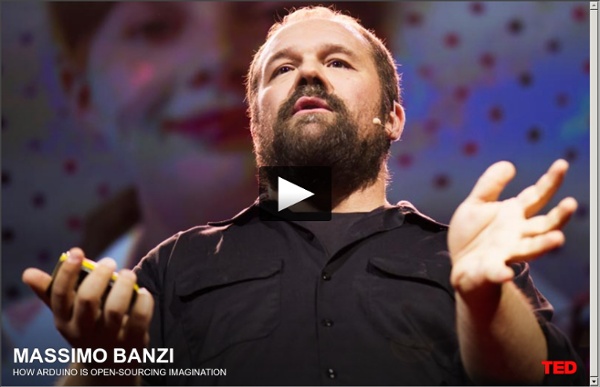



http://www.ted.com/talks/massimo_banzi_how_arduino_is_open_sourcing_imagination.html
Wikispeed, la troisième révolution industrielle en open source Digne héritier d’Henry Ford, Joe Justice a fondé WikiSpeed, une entreprise capable de mettre au point un prototype de voiture à haute efficience énergétique en moins de trois mois. Comment ? En transposant les méthodes “agiles”, héritées du développement des logiciels, à la production de biens matériels. Depuis que Michel Bauwens nous en a parlé, WikiSpeed fait partie des projets que nous suivons avec le plus d’attention dans le domaine de la production collaborative. Après son interview par Simone Cicero, OuiShare Connector à Rome, nous avons invité Joe Justice, le charismatique fondateur de WikiSpeed, à nous rejoindre en Europe début octobre pour une série de workshops et de conférences : d’abord à Rome (à Cowo360), puis à Barcelone (au FabLab et à MOB Coworking) et enfin Paris (à l’ENSCI, en partenariat avec la Fing). Cet article synthétise ces échanges passionnants.
Everyheartbeat.org. A platform to bridge the digital divide and connect the billions of smart phones worldwide to the health ecosystem. KEYNOTE: Managing a Collaborative Multi-National Team in Real Time Description: Team WIKISPEED entered a $10 Million competition to produce road legal 100+ mpg cars. They built the impossible in three months. Joe Justice will talk about Agile practices applied to enormously speed up physical manufacturing. Joe leads WIKISPEED, a team of 71 volunteers in 6 countries, and walks through how their 100 MPG road car was made possible through modular design, iterative development, and Agile project management. Joe takes a deep dive on exactly how Agile from software projects is applied to physical engineering and manufacture. Joe will use the example and of the design and development of their revolutionary 100 mpg, gasoline powered, four-seat car with a target price of $17,995.
WIKISPEED - WIKISPEED Open Source Ecology